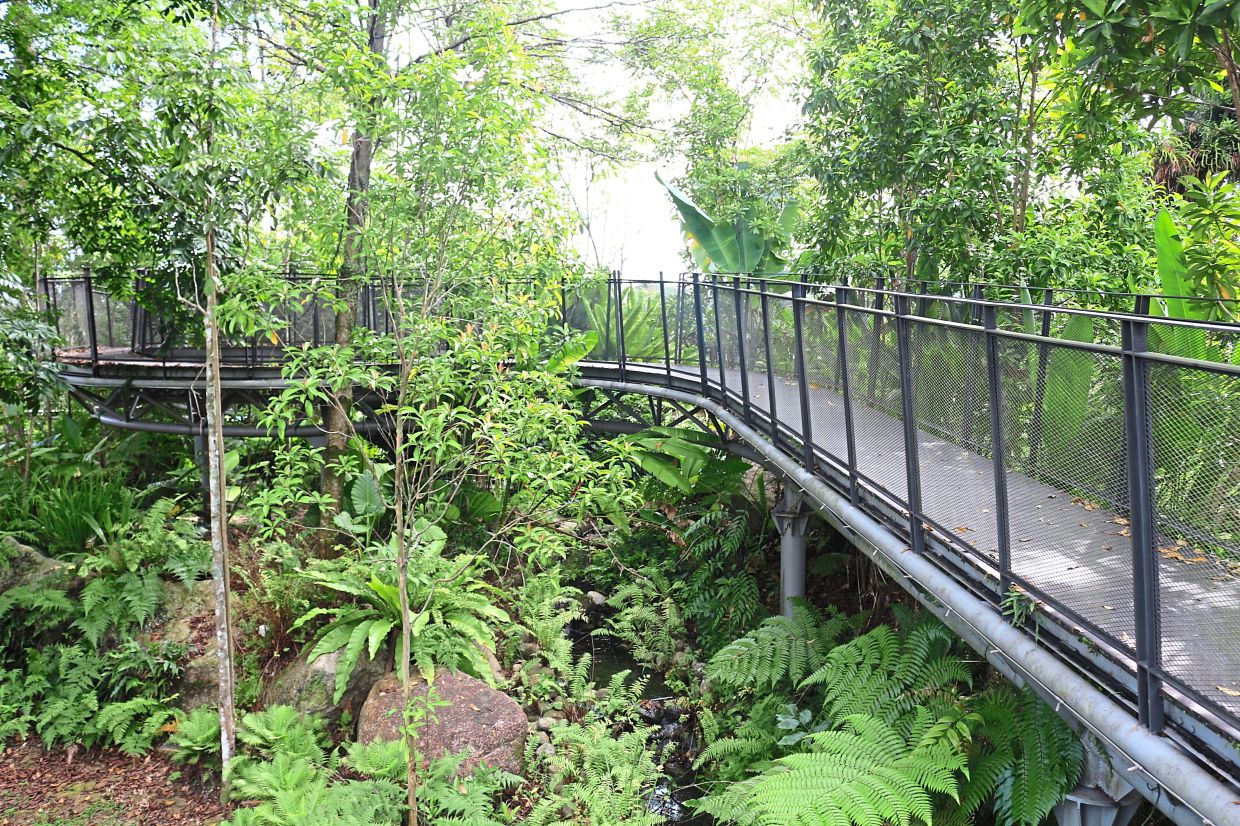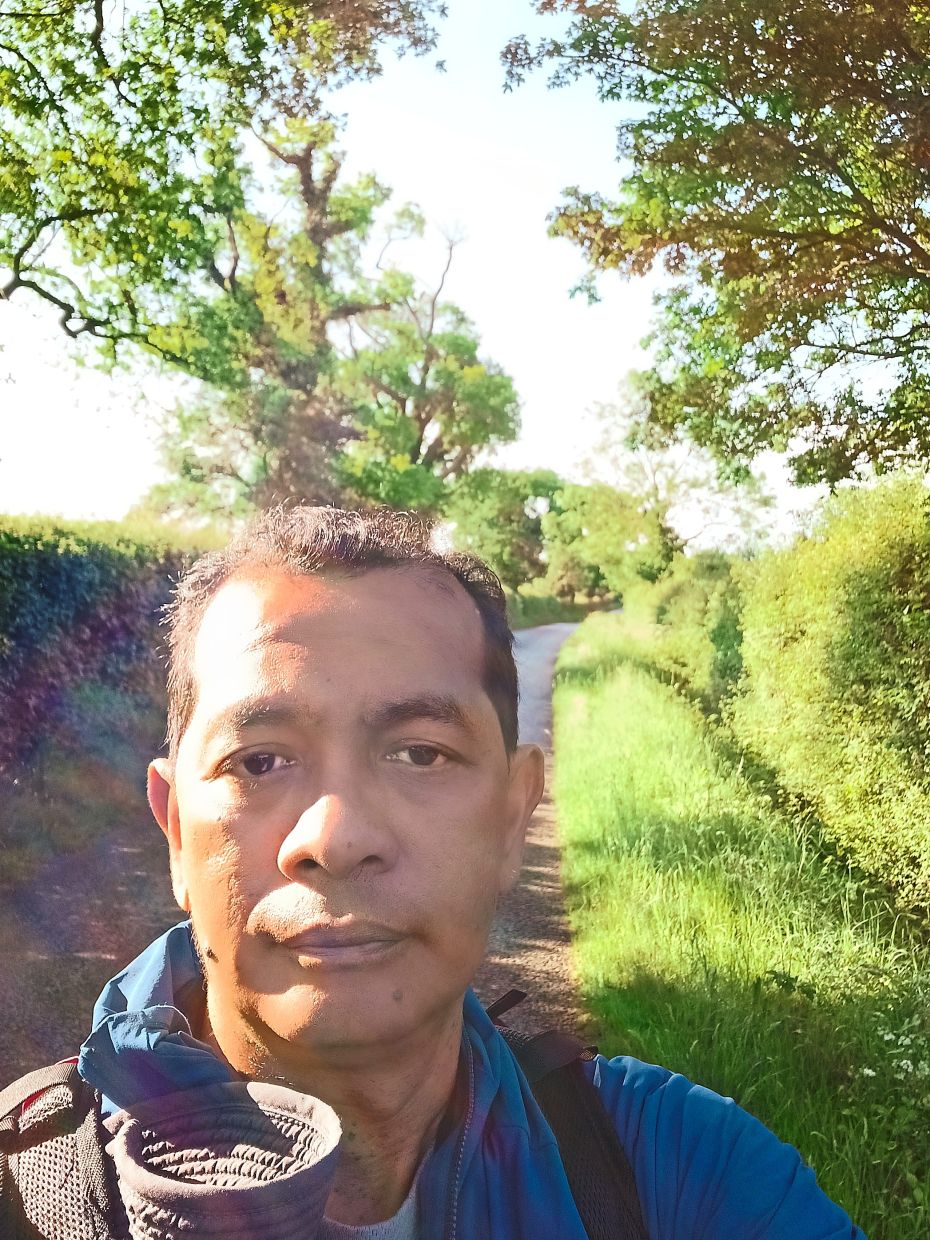The dried up Lake Cova in Kota Damansara has the potential to be re-established as a green connector, serving as a stormwater detention basin and recreational park.
A THREE-YEAR project is underway to create a network of ecological and physical pathways by connecting isolated green spaces in the Klang Valley.
Called Rangkaian Urban Green Spaces (Rugs), the initiative by Malaysian Nature Society (MNS) covers the Kuala Lumpur city centre and an area it has named Damansara-Pantai Arc.
The spaces under Damansara-Pantai Arc are Kwasa Damansara, Bukit Lanjan, Kampung Sungai Penchala, Bukit Sri Bintang, Bukit Kiara North, National Institute of Public Administration (Intan), Rimba Ilmu in Universiti Malaya, Bukit Gasing, Federal Hill, Carcosa Sri Negara, Taman Tugu, Bukit Maxwell and Changkat Tugu Hill.
The pathways are to encourage wildlife movement as well as enabling local communities to use them for recreational and educational purposes, including better appreciation of Malaysia’s natural heritage.
The project is the first of its kind in Klang Valley and Peninsular Malaysia to protect Malaysia’s resources and diminishing land space.
MNS conservation head Donovan Louis said 21 green spaces were identified for the facilitation of ecological linkages as part of Rugs.
A team of experts and experienced nature enthusiasts were assembled to undertake flora and fauna surveys within 13 selected areas to assess their richness in biodiversity, as well as identify potential routes for ecological linkages between the patches.
The survey recorded more than 14 species of mammals, 110 bird species, 58 herpetofauna and 104 types of butterflies and dragonflies.
Additionally, review of existing literature further revealed 51 species of mammals, 40 of birds and 16 herpetofauna.
Louis said in April, MNS received US$150,000 (RM702,600) from GEF (Global Environment Facility) Small Grants Programme (SGP) and United Nations Development Programme (UNDP).
“The Rugs project will envision a landscape strategic plan in the Klang Valley.
“This is seed money to implement a programme to ensure conservation initiatives look at national preservation of natural resources,” Louis told StarMetro.Landscape-based approach
Louis said green spaces in Rugs would take many forms, such as parks, gardens, forest reserves and green corridors, and were essential for supporting the environment and society in both urban and rural settings.
“The project aims to create a green refuge offering recreational opportunities and ecosystem benefits such as mitigating the heat island effect, in addition to improved water and air quality for Klang Valley folk.”
He added that MNS intended to promote Rugs as a nature-based environmental and ecological services master plan in Klang Valley.
This involves various non-governmental organisations, civil society groups, local community action groups and grassroots members who are currently safeguarding pockets of green space found within Klang Valley.
Phase I of the project will focus on linking green spaces between Damansara Arc and Federal Hill, before extending to eastern Klang Valley in Phase II towards the Central Forest Spine (CFS).
CFS comprises forests within Peninsular Malaysia that provide a sanctuary for endangered species and irreplaceable ecosystem services such as water supply, climate regulation, soil protection and alleviation of flood risks.
Klang Valley is a densely populated and urbanised region centred in Kuala Lumpur and includes cities in Selangor such as Petaling Jaya, Subang Jaya and Shah Alam.
More importantly, Louis said, urban conurbation and human activities such as land-use change, habitat loss, pollution and climate change had significantly fragmented Klang Valley’s green lungs into scarce, degraded, and isolated green spaces.
“On a biodiversity aspect, MNS will conduct ground-truthing where we will go onsite to look at current changes in green spaces and apply ecological services,” he said.
Klang Valley has significant green spaces that contribute to the overall greenery and serve as important green lungs.
Among them are Perdana Botanical Gardens, Taman Tugu, Taman Botani Negara Shah Alam, Klang River Park, including along mangroves of Selangor Maritime Gateway in Klang, as well as various community forests and recreational spaces like Bukit Kiara, Kota Damansara Community Forest and Shah Alam Community Forest.
“All these green spaces have diverse biodiversity, recreational facilities, nature trails, pedestrian and cycling paths,” said Louis.
He said Klang Valley, like many urban areas, was in dire need of connectivity, which could help solve some of the problems associated with limited green spaces in urban landscapes.
One method, he said, was to create green corridors or waterfront green spaces along existing roadways, riverbanks and other linear spaces.
“These corridors can include walking paths, cycling trails and recreational facilities.”
Tree-lined streets featuring tropical tree species like rain tree, yellow flame and saga can provide shade, reduce urban heat and improve the aesthetics of the city.
“Green infrastructure elements like bioswales, rain gardens and permeable surfaces can be integrated into public spaces, streetscapes and carparks to create a network of green infrastructure that manages stormwater and improve water quality,” he said.
Project consultant Dr Teckwyn Lim, who is also University of Nottingham Malaysia honorary associate professor in environmental science, said Rugs was a long-term vision for connecting Klang Valley’s green spaces while aiming for ecological and recreational connectivity.
“The challenges include maintaining existing corridors and creating new ones.
“The first step towards a sustainable project is getting stakeholder buy-in from decision makers and public.
“Once key stakeholders accept the vision, Rugs will transition to become a joint vision.
“However, MNS will continue to guide its implementation, focusing on ensuring its ecological aims.”Enhancing ecological linkages
Rugs recommends two main approaches to enhance ecological linkages between urban green spaces – land-based and riparian corridors.
Land-based corridors will utilise existing roadside vegetation, green spaces in utility reserves such as beneath electricity transmission cables and neighbourhood playgrounds.
It also involves establishing wildlife crossings over and under roads, highways and other barriers.
As for riparian corridors, Rugs will increase protection of vegetation alongside drains, flood retention ponds, lakes and river reserves, which will enhance the ability of wildlife to move across, down to and up from steep canalised banks of waterways.
“Currently, many green spaces in Klang Valley are fragmented by development, and wildlife are trapped in forests.
“We want to make it possible for animals to migrate safely to bigger sites to avoid human conflict,” said Louis.
Lim said connectivity required maintaining vegetation and building physical structures such as wildlife viaducts and tunnels while ensuring legal protection of the land.
“The Rugs vision involves both private and public land.
“For private land, MNS plans to replicate the Taman Tugu model whereby landowners agree to allow nature conservation and recreation on part of their land bank.
“For public land such as playgrounds, river reserves and electric-pylon reserves, MNS will engage with relevant authorities to ensure that biodiversity conservation and recreation are incorporated into their existing land-management procedures,” Lim added.A concise plan
Friends of Bukit Kiara (FOBK) secretary Peter Leong, a retired engineer of 30 years, said Rugs was a succinct plan to engage with government agencies to gain collaborative support.
Leong’s expertise in the project will include understanding land and urban planning rights, town planning and land laws.
“Our landscape strategy is understanding how pockets of the ecosystem can be linked up.
“Aside from processing the data, it is also about understanding the linkages and coordination, as well as where corridors are between public and private land.
“Private land makes it harder to create linkages. We will weigh in on understanding the status of land planning and land law perspectives, and what kind of legislative and policy frameworks can be leveraged to make it sustainable corridors,” he said, adding that they needed to evaluate spatial planning conservation that would affect zoning issues for Rugs.
“This will involve how we can preserve land corridors required for wildlife protection.”
Rugs, he said, was similar to CFS but in an urban context.
“Search criteria in the urban context requires knowledge of land planning laws, whereas in the CFS forest context, it is more straightforward.”













